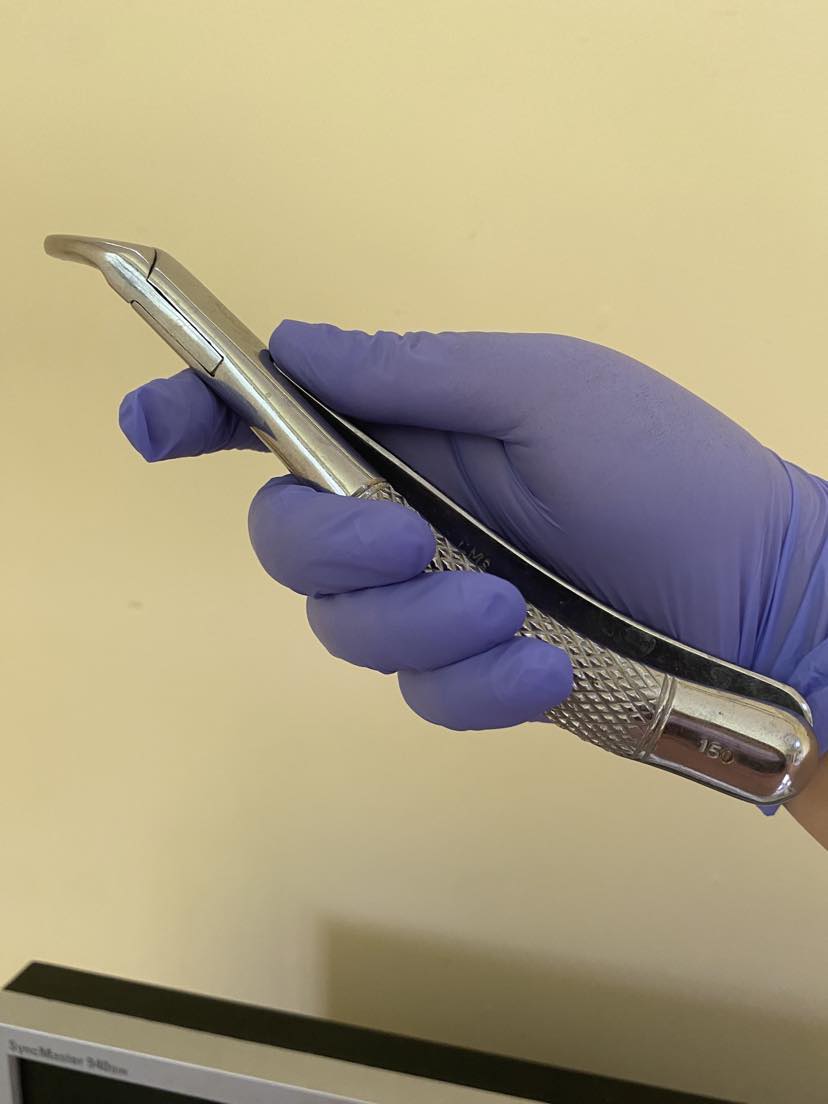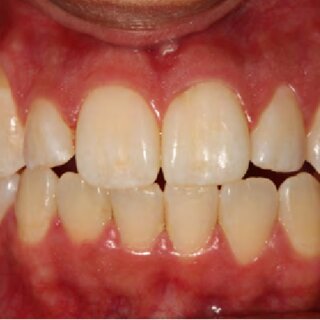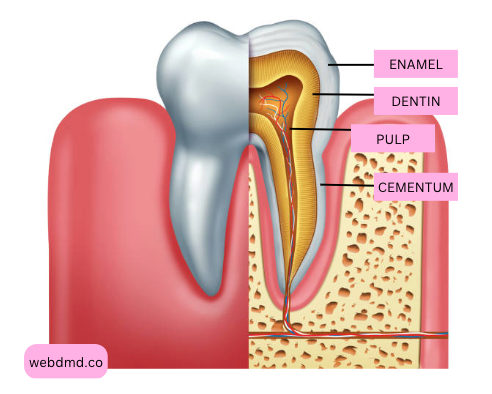Oral surgery is a branch of dentistry that involves diagnosis, treatment, and surgical management of various conditions and diseases related to the mouth, jaw, face, and neck.
This specialization in dentistry can be performed in a dental office, hospital, or outpatient surgical center, depending on the nature of the procedure.
One of the courses that you have to take as a dental clinician is Oral Surgery, and you have to memorize all the oral surgery instruments that you will need to perform routine procedures like extraction of root fragments, incision of ranula, or frenectomy to more complex cases like excision of cysts, drainage of abscesses, or odontectomy.
We also provide a downloadable copy of the reviewer that we have created to prepare you for your upcoming exams.
Have fun studying, future Doc!
Oral surgery instruments names and uses
Dental Basic Instruments
Mouth Mirror
The mouth mirror is used for visual examination. This allows the dental clinician to see areas that could only be visible through indirect vision. This instrument also comes in handy in reflecting the tissues and retracting the rowdy tongue.
There are different types of mouth mirrors in the market as of today, but the most commonly used in practice is the front-surface mirror, as it reduces the distortion and prevents magnification of the tissues being viewed.
Dental Explorer
The dental explorer is used for oral examinations, as well as the mouth mirror. It is used to check the integrity of teeth, and locate small cavities and tooth wear. It is essential to note that the dental explorer is used with care and should not cause unnecessary damage to tooth enamel or soft tissues.
Always remember to use dental explorer with care as its sharp ends can traumatize the soft tissues of the patient or pierce through an already open cavity.
Spoon Excavator
Based on its name, the spoon excavator is a dental instrument used has spoon-shaped ends that primarily help in excavating dental caries, depositing dental materials, carving and shaping restorative materials, and in the case of dental surgeries, excavating and cleaning debris.
Spoon excavators come in different sizes, depending on the area where they will be used.
Cotton Pliers
Cotton pliers, also known as cotton forceps or cotton tweezers, are dental instruments designed with a locking mechanism and serrated tips to securely grip and hold objects.
The most common use of cotton pliers is to manipulate cotton rolls for isolation, hold and manipulate small dental materials like gutta percha or cotton pellets, retrieve any debris or foreign materials, and aid with suturing.
Some cotton pliers have a locking mechanism to grasp materials like gutta percha and put them into place.
Handpiece
No dentist could ever survive without a dental handpiece. This instrument, as a matter of fact, is one of the first dental instruments (and probably the most expensive instrument) that I purchased as a pre-clinical student.
The use of a dental handpiece varies depending on its type. The highspeed handpiece is used for drilling into the tooth to do cavity preparations to remove the infected enamel or dentin and polish the restorations. This handpiece is also used for tooth preparations to fabricate crowns or bridges. This handpiece is also used for access preparation in root canal treatment.
In dentistry, we also use low-speed handpieces that are used mainly for polishing restorative materials, polishing teeth that have just undergone dental cleaning, and prosthodontics.
For oral surgery, standard surgical handpieces are used specifically in oral and maxillofacial surgical procedures. Oral surgery handpieces are capable of high-speed rotation, typically ranging from 200,000 to 400,000 revolutions per minute (RPM), which means it is efficient for cutting and drilling during surgical procedures.
The striking difference between surgical handpieces from the usual high-speed handpiece or low-speed handpiece is it is not aerosolized and the water comes out in the form of mist. With surgical handpieces, the water comes out in streams to prevent air emphysema.
Burs
Dental burs are rotary cutting instruments used in dentistry to remove, shape, or polish various dental materials and tissues. They attach to dental handpieces and come in a variety of shapes, sizes, and materials, each designed for specific dental procedures.
You will know which types of bur to use as you go through with your Dentistry journey, but for this article, here are the different surgical burs that oral surgeons use for their practice.
Surgical Round Burs: Round burs have a cylindrical shape and are commonly used for initial bone cutting, creating holes for dental implant placement, and contouring bone during gingivectomy or surgical bone adjustment.
Surgical Length Round Diamond Bur by Strauss Diamond
Pear-shaped Surgical Burs: Pear-shaped burs have a rounded tip that tapers to a point, making them suitable for accessing and preparing narrow or hard-to-reach areas during surgical procedures.
Pear-Shaped Carbide Bur from CV Dental Supply
Surgical Fissure Burs: Fissure burs have a flat, straight cutting edge and are commonly used in oral surgery for making precise cuts in bone or sectioning teeth during odontectomy.
Flat Fissured Bur from Henry Schein
Surgical End-Cutting Burs: End-cutting burs have cutting edges on the end, allowing them to cut in a horizontal direction. They are useful for cutting bone around sensitive structures.
Surgical End-Cutting Bur from Strauss & Co.
Gauze
Gauze is a widely used material in oral surgery due to its versatility, absorbency, and non-linting properties. The common uses of gauze are to control bleeding during and after surgeries, impregnated wound dressing, or wipe off excess saliva and debris.
Local Anesthetic Delivery Systems
Syringe
In Oral Surgery, aspirating syringes are preferred to ensure that the local anesthesia will not be deposited inside the blood vessel.
When you inject the needle into the syringe, you should be able to pull it backward to check if blood enters the needle. When blood enters the needle, this is called positive aspiration which means that your needle is located intravenously or inside the blood vessel.
When you have positive aspiration, you should withdraw the needle and try to re-angulate your syringe.
Needle
In Dentistry, there are two basic types of needles that we use. The long needle with a length of 30mm, and the short needle, with a length of 21mm.
The long needle is used for nerve block while the short needle is used for local infiltration.
These needles have different gauges as well, which determine the diameter of the hollow lumen within the needle. For patient comfort, we usually opt for gauge 27 or gauge 30.
Routine Extraction
Retractors
To gain access and visibility, and protect the tissues around the surgical site, retraction is done during the procedure using different surgical retractors like the following:
Minnesota Retractor (University of Minnesota Retractor)
The Minnesota Retractor was developed by the College of Dentistry at the University of Minnesota. It is used to retract the cheek, and the tongue, and to retract soft tissues for oral examination of posterior sites like the third molars.
Minnesota Retractor from HuFriedy
Seldin Retractor
The Seldin Retractor is used to retract and reflect tissues during flap surgeries. This can also be used to retract the cheek and the tongue.
Seldin Retractor from Salvin Dental Specialties
Columbia Retractor
Also known as the “Glorified Cheek Retractor” and is used to retract the cheek.
Columbia Retractor from Henry Schein Dental
Weider
Also known as the “Glorified Tongue Retractor”, the Weider Retractor is usually used when working on the lingual portion of the oral cavity.
Weider Cheek Retractor from ProDentUSA
Elevators
Elevators are surgical instruments that move the tooth and root out of the socket along the natural curvature of the roots. They are called elevators because they ‘elevate’ the tooth out of the socket.
Straight Elevators
Straight Elevators are designed to gently elevate and luxate teeth from the surrounding bone, making it easier for the dentist or oral surgeon to remove them. They have straight, chisel-like blades with a flat or slightly curved tip, which allows them to be inserted between the tooth and the bone.
The principle of action used in using straight elevators is Lever Type I.
Wheel And Axle
Wheel and axle elevators are named as such because it has the same principle as the wheel and axle simple machine. Your hand will exert a force on the handle of the elevator which acts as the wheel, then the axle, which is the shank up to the working end, will consequently elevate the tooth.
Cryer Elevator
Crossbar Elevator
Crane Elevator
Luxators
Luxators luxate teeth from their socket, quite literally. They look very similar to the elevators, but unlike elevators that could be able to withstand the force of elevating the teeth from the socket, luxators only sever the periodontal ligament fibers that grasp the teeth in the sockets. They also appear straighter compared to elevators.
There are oral surgery instruments nowadays that function both as a luxator and an elevator, just like the EL3S Luxating Elevator of HuFriedy.
Forceps
Dental forceps in Oral Surgery are used to actually extract the teeth from the socket. They are classified into Maxillary Forceps and Mandibular Forceps, depending on the direction where their beaks are pointed.
Here are the most basic Dental Forceps that you will use in your practice:
Maxillary Forceps
150 Forceps
The teeth that can be extracted with 150 Forceps are the maxillary anterior teeth, the maxillary premolars, and maxillary root fragments.
69 Forceps
The 69 Forceps are used for root fragments, specifically when only the middle to apical third of the root is left. You can see that the beak of 69 is much slimmer to grasp the root tips that needs to be extracted.
65 Forceps
The 65 Forceps are used for root fragments in the posterior area, specifically for the 1st and 2nd molars). The beaks of this forceps have a characteristic 90-degree bend which is often called the Bayonet Beak Configuration.
Image from Premium Instruments
240 Forceps
The 240 Forceps are used for molars with fused roots.
18L and 18R Forceps
The 18L and 18R Forceps are named as such because these are specific forceps for the left (18L) and right (18R) part of the maxilla.
Mandibular Forceps
151 Forceps
The teeth that can be extracted with 151 Forceps are the mandibular anterior teeth, the mandibular premolars, and mandibular root fragments.
16 Forceps
The 16 Forceps are used to extract the mandibular molars with furcation (most likely the 1st mandibular molars) because of their ‘cowhorn’ configuration where you can adapt the beaks on the furcation of the teeth.
Image from Coricama Dental
17 Forceps
The 17 Forceps are used to extract any mandibular molars. It has the same beak as the 215 Forceps but what makes it different is its straight handle.
Tissue Forceps
Adson Tissue Forceps
The Adson Tissue Forceps is a toothed-type tissue forceps used to stabilize the tissues during flap and suturing.
Image from Wexler Surgical
Debakey Tissue Forceps
The Debakey Tissue Forceps are long and slender, very similar to your usual cotton pliers but they have this serrated tips that is helpful in picking up gauze and pieces of hard or soft tissues.
Russian Tissue Forceps
The Russian Tissue Forceps are easy to spot as it has this duck-bill shaped tip that is used for picking up hard and soft tissues.
Image from Mopec





Hello,
0DAY music scene releases, sorted style and date https://0daymusic.org/premium.php
Full access to 314 TB music, files are available every time.
Best Regards,
0day team
Terrific article! That is the type of information that should be shared
across tthe web. Shamme on the search engines for not positioning this put up
higher! Come on over and visit my site . Thanks =) https://WWW.Waste-Ndc.pro/community/profile/tressa79906983/
seo під ключ
I?¦ve recently started a web site, the information you offer on this web site has helped me greatly. Thank you for all of your time & work.
[…] confirm such classification, a WHO/CPI/PSR probe is slid gently across the tooth surface to check for a limited discontinuity or a slight […]
Great post! We are linking to this particularly great post on our site.
Keep up the good writing.
Here is my homepage nordvpn coupons Inspiresensation